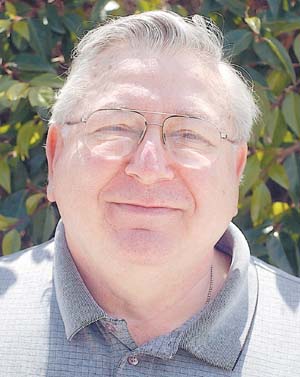At some point during the San Benito County Board of Supervisors’
discussion of the county’s Growth Management Ordinance the room
went surreal on me. It started to look like Salvador Dali’s most
famous painting,
”
The Persistence of Memory
”
– also known as
”
Melting Clocks.
”
The clock face was oozing, its hands were frozen and the
decisions and directions to the staff made less and less sense. I
do not know exactly when, but eventually the disconnect with
reality became complete.
At some point during the San Benito County Board of Supervisors’ discussion of the county’s Growth Management Ordinance the room went surreal on me. It started to look like Salvador Dali’s most famous painting, “The Persistence of Memory” – also known as “Melting Clocks.” The clock face was oozing, its hands were frozen and the decisions and directions to the staff made less and less sense. I do not know exactly when, but eventually the disconnect with reality became complete.
This is the classic case of a government solution just looking for a problem – there is no need to manage what we do not have. One of the primary reasons we have no prosperous growth is that it has been “managed” out of existence. If, as I suspect, this is the real purpose of some of the ordinance’s provisions, it has worked perfectly.
The majority of the board decided that, in addition to a never-ending list of special exemptions designed to help the “right” people and exceptions for super-large developments that will never be approved, the growth rate will be restricted to the state’s growth rate but not less than 1 percent.
That growth rate, determined by the growth in all counties, will dictate the maximum growth rate in San Benito County. The median California county population is 180,500; ours is less than one-third of that, with most in one city where the ordinance does not apply.
What does that arbitrary number have to do with our needs and desires? Nothing. It’s just a way for a majority of the board to throw another hurdle on to a track that has hurdles galore, but no finish line. I credit the staff for trying to explain the system – a system made more incomprehensible by the lack of a flow chart showing the relationship of the various restrictions and exemptions. The answer is you can’t get there from here.
While the board was trying to define precisely how many family exemptions would be allowed (do cousins count?), the staff kept pointing out that all other restrictions, such as minimum lot size, still apply. Believe me, “all other” is nothing to sneeze at with the county. Additionally, family exemptions have a special 10-year deed restriction to prevent stealth development. Yet, a majority of the board voiced opposition to removing the restriction’s numerical limits. If you live in San Benito County, don’t have a big family that wants to stay together, because someone is going to be left out.
Discussions about affordable housing, which is exempt from the ordinance, were the most distorted. The exemption shields the ordinance from the type of legal challenge that invalidated San Juan Bautista’s growth control. However, restricting everything else effectively kills affordable housing too, which is not economically sustainable in isolation. It’s the same as allowing fishing, but eliminating all bodies of water. The net effect is guaranteed to stifle all the fisherman.
Another issue is inclusionary housing, which I call the “exclusionary housing.” It’s fair to question the real purpose of the requirement that a developer build or pay for affordable housing equal to 30% of a development and lay the costs off, somehow, on everyone else. It’s easy to measure the outcome – it has not worked.
The correct way to do affordable housing – if you actually want it – is to work the problem backwards. The board should decide how much affordable housing it wants and provide the incentives and credits for regular development that will fund and balance out those costs. In fact, that’s the right way to do all development. There is only one drawback: That method requires honesty with the voters.
Marty Richman is a Hollister resident. His column runs Tuesdays. Reach him at cw*****@***oo.com.










